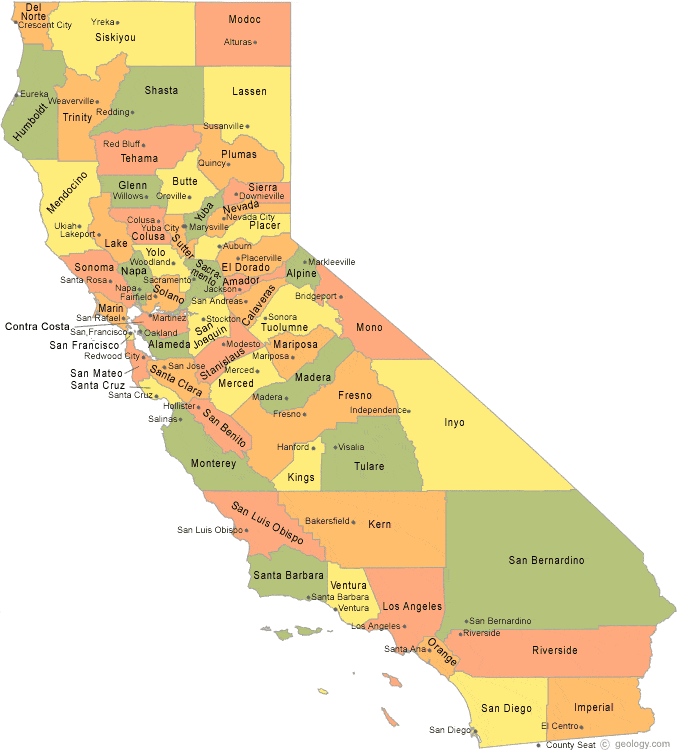California Counties Overview: How Many, Where, and Why They Matter
California Counties Overview: How Many, Where, and Why They Matter
Blog Article

Trying to find out what the exact county count in California is? You’re certainly not the only one. From trivia nights to travel planning, the answer—58—comes up again and again, yetthose two digitsonly tells half the story.
California’s counties forma patchwork of contrasts: fog-kissed seaside towns, snow-capped alpine districts, vast agricultural heartlands, and global entertainment capitals. Every county has a chapter in the how many ca counties state’s saga, moulded by gold-rush dreams, high-tech revolutions, and ever-changing demographics.
In the sections ahead, we’ll dig intohow the state’s county map froze at fifty-eight, the services counties deliver day-to-day, and which ones stand out for size, population, or sheer quirkiness. When we’re done, you’ll own the knowledge—and map your next California adventure with confidence.
How the Golden State Reached 58 Counties
On statehood day in 1850, the map contained barely half the jurisdictions we know now. Rapid gold-rush immigration pushed officials to subdivide vast districts. Within twenty years, the count had risen to more than fifty counties, and by 1907 the remaining gaps were closed, setting in stone the canonical figure of fifty-eight.
Capitol archives indicate that most new counties stemmed from a trio of factors:
- Geographic isolation made court access impossible.
- Revenue battles pitting ranchers against merchants sparked break-ups.
- Cultural rivalries demanded tailored governance.
By 1920, the political map settled. In modern times, every effort to create county #59 stalls, prompting analysts to call the era when new counties sprouted decisively over.
From Kelp Forests to High Deserts: County Geography
Plot a route from the Smith River watershed to border-side Calexico, and you’ll cross dozens of ecosystems. Pacific-facing districts benefit from fog-cooled summers, while interior giants like San Bernardino or Kern record triple-digit heat.
- Alpine districts such as El Dorado, Tuolumne, and Sierra receive winter snows.
- Sacramento–San Joaquin fringe counties fight subsidence but export produce worldwide.
- Off-shore authorities like Ventura license film crews on beaches.
That geographic spread underpins how water rights, zoning, and ag yields diverge so sharply. Climate, after all, shapes crops and careers.
Behind the Scenes at the County Level
Within the state’s tiered system, municipalities handle zoning, but counties shoulder the bread-and-butter functions that keep daily life humming. Life’s paperwork trail—vital records, coroner reports, property deeds—all are archived at the county clerk or recorder.
County law-enforcement offices patrol unincorporated land, while trial courts hear felony cases. Public-health branches distribute food assistance. Funding debates spark long agenda nights.
Example: Contra Costa’s Shared Services Model
Contra Costa partners with nearby cities for animal control, highlighting how adaptable county structures can be. There’s no single blueprint when land areas shift from 47 to 20 000 sq mi.
Ultimately, county offices act as middle managers between Capitol and curbside. Understanding their remit guides newcomers navigating paperwork.
Where the People and Money Are
California houses over thirty-nine million people, but the headcount clusters unevenly. LA County by itself packs nearly 25 %. At the other extreme, high-elevation Alpine hovers around a thousand residents.
- Largest population: Los Angeles
- Fewest people: Alpine County
- Widest landmass: San Bernardino County
- Tightest borders: City & County of SF
Money, like people, concentrates and evaporates. South Bay enclaves boast per-capita GDP rivaling small nations, while cotton-and-almond hubs depend on seasonal labour influxes. Such economic polarity informs legislative redistricting every decade.
Tracking each superlativeis trivia gold: county borders redraw home-buying budgets and business licences.
The Ultimate California County Circuit
County-collecting hobbyists, setting foot in each CA county ranks as a top geo-challenge. A popular itinerary sets out in sunny San Diego, heads north along Highway 1, jogs east near Santa Cruz, then zigzags across the Central Valley’s orchard belt, before climbing into the granite spine for ghost towns and mining museums.
Breaking the Trip Into Segments
- Coastal Kick-off – Mission trail coast; 10 counties in four days.
- Crop-Belt Drive – Bakersfield up to the delta; produce-market run.
- Lava Beds Detour – crater-rim roads; jaw-dropping vistas.
Finish the circuit in Imperial, having logged 1 400–2 000 miles. At that point, you can answer any road-trip quiz about county tallies—having grabbed selfies at every line marker.
Frequently Asked Questions
Curious about California’s 58 counties? The following FAQ has you covered.
How many counties does California have?
California officially recognises fifty-eight counties—a total locked in for over a century. Regardless of the source—be it Sacramento archives or federal census data: precisely fifty-eight.
Which county has the largest population in California?
The population heavyweight is Los Angeles County, housing roughly one in four Californians. From Hollywood to high tech, a mix of industries continues to fuel steady inflow.
Which CA county has the fewest residents?
Alpine County holds that distinction, rarely crossing the 1 200-resident mark. Location along rugged mountain corridors keeps growth modest, making it a haven for solitude seekers.
What is California’s biggest county geographically?
The land-area giant is San Bernardino County stretching more than 20 000 square miles. From Joshua trees to ski lifts, few regions illustrate California’s contrasts so vividly.
How did California end up with 58 counties?
Early statehood growth pressures split larger districts into smaller units, with the final adjustments ratified in 1907. Since then, proposals to add a 59th county have surfaced but never cleared the Legislature.
Is it possible to form a 59th county?
Technically, the California Constitution leaves the door open, but the hurdles are steep. Petition drives, feasibility studies, dual-county referenda, and a two-thirds vote in Sacramento make secession rare. Hence, California has remained at 58 for generations.
Why are counties important to everyday life?
Behind the scenes, counties keep daily life functioning: voter registration, deed recording, health clinics, and sheriff patrols. Remove counties from the equation, and civil society would struggle to operate.
Report this page